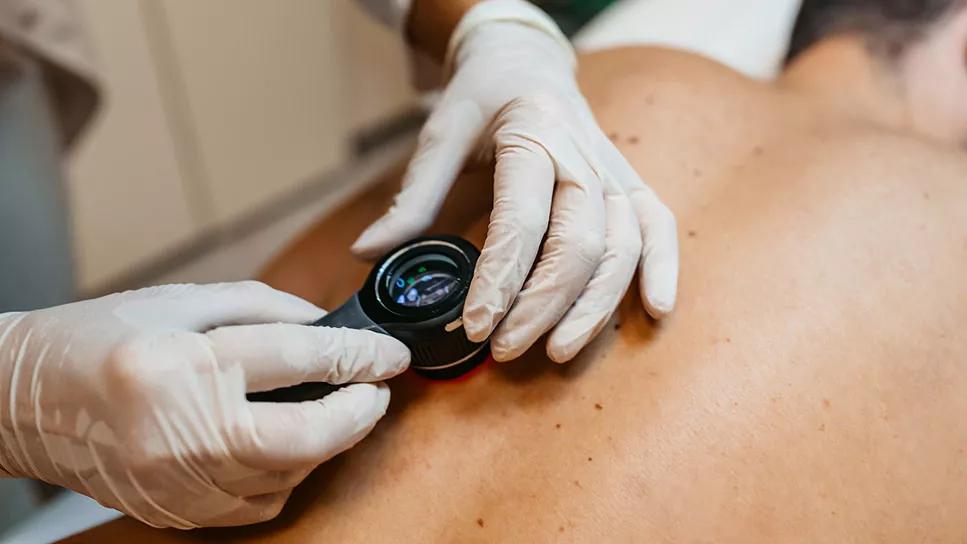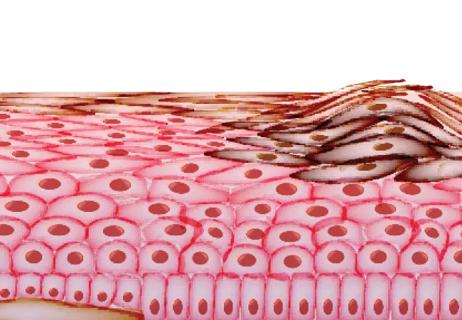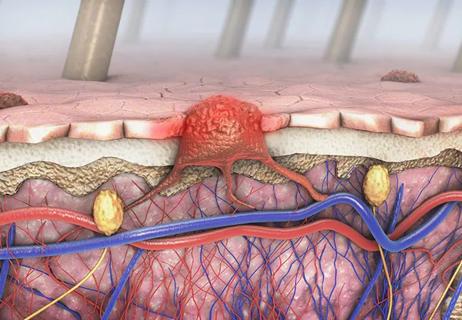Family history may eclipse sun exposure in some cases

When it comes to skin cancer, most people think of warnings about sunburn and tanning beds. Thoughts of inherited risks are reserved for diseases like breast cancer or colon cancer.
Advertisement
Cleveland Clinic is a non-profit academic medical center. Advertising on our site helps support our mission. We do not endorse non-Cleveland Clinic products or services. Policy
A new study challenges this status quo by showing that genetics play a larger role in melanoma risk than previously recognized.
Physicians rarely order genetic screens to assess risk factors for patients with a family history of melanoma because, according to the previous, limited studies, only 2% to 2.5% of all cases are genetic. For the same reason, insurance companies rarely cover these tests outside of the most extreme situations. In the medical field, genetic testing is generally not offered for cancers that don't meet a threshold of 5%.
A study led by Cleveland Clinic researcher Joshua Arbesman, MD, and Pauline Funchain, MD, of Standford Medicine suggests that melanoma more than meets that threshold. Their results, published in the Journal of the American Academy of Dermatology, indicate that up to 15% of patients who received melanoma diagnoses from Cleveland Clinic physicians between 2017 and 2020 carried mutations in cancer susceptibility genes.
The research team analyzed international patient databases and found similar results.
"Hereditary cancers can wreak havoc through families and leave devastation in their wake. Genetic testing lets us proactively identify, screen and even treat these families to equip them with the tools they need to get the best healthcare possible," says Dr. Arbesman. "I would recommend physicians and insurance companies expand their criteria when it comes to offering genetic testing to individuals with family histories of melanoma, because inherited predisposition to it isn't nearly as rare as we think it is."
Advertisement
Dr. Arbesman, who runs a lab in Cleveland Clinic Lerner Research Institute's Cancer Biology, says his findings support an increasingly popular opinion among cancer biologists: Risk factors beyond sun exposure can influence an individual's chances of developing melanoma.
"Not all of my patients had inherited mutations that made them more susceptible to the sun," he says. "There's clearly something more going on here and more research is needed."
Dr. Arbesman and his team are studying many of the genes that came up in his patients' tests to learn more about how melanoma develops and how it can be treated. For example, he is working to determine if some of his patients and their families who show inherited mutations may benefit more from immunotherapy compared to those who don't carry inherited mutations. His lab is also working to determine how other patients' genes contributed to the development and the severity of their melanoma.
Advertisement
Advertisement

Neoadjuvant immunotherapy improves outcomes

Largest study of its kind identifies three treatment exposures that contribute to risk

Immunotherapy is preferred initial treatment for majority of patients

Timing of adjuvant immunotherapy unclear for maximum overall survival

Melanoma may be more heritable than we think

Highly personalized treatment shrinks tumors resistant to immunotherapy

Cleveland Clinic Cancer Institute among select group of centers to administer highly personalized treatment

Consider secondary syphilis in the differential of annular lesions